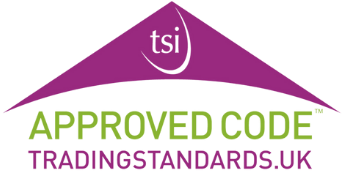Buying a house with someone else is often an attractive idea. By combining your salaries, the bank will typically increase the amount you can borrow, enabling you to move into a more excellent area or a larger house.
You may also want to move in with someone if you are in a romantic relationship or because you are close family members. For those worried about feeling lonely when living alone, this can represent a healthy solution.
If you find yourself in this position, you may wonder: what are the different ways a property can be co-owned between two people?
In the United Kingdom, the two more common methods of co-ownership are ‘Joint Tenancy’ and ‘Tenancy in Common’. Each route has advantages and drawbacks, which you will want to know before deciding on the best path forward.
So, if you want to understand the difference between these two methods of co-ownership, then keep reading. We’ve provided all the answers you need below.
What is a Joint Tenancy?
If you co-own a house under a ‘Joint Tenancy’ arrangement, all parties own the entire house. In short, no co-owner has a specific or quantifiable share, as the money is split equally if the property is sold.
Under a Joint Tenancy, the property automatically transfers to the surviving party if one of the co-owners dies. This could be ideal for a married couple who want the other person to inherit the house entirely if they pass away.
If a house is owned under a Joint Tenancy, it cannot be passed on to an ‘heir’ in a Will. This is why this route is more common among couples who do not have children.
A Joint Tenancy is not necessarily always between two people – it can sometimes be more.
What is a Tenancy in Common?
When a house is co-owned as a ‘Tenancy in Common’, each person has a quantifiable share in the property, which is not necessarily equal between all parties. Some co-owners could have a much larger share than others.
If you pass away, your share of the property does not necessarily get transferred to the surviving co-owner. You can pass on your share of the house in your Will. Therefore, This option is more common for people with children, whom the owner wants to pass the property onto.
Shares can be traded, and new tenants are added while all parties live during a Tenancy in Common. For example, it is common for a couple living together to transition from a ‘Tenancy in Common’ to a ‘Joint Tenancy’ once they get married because they want the property to be automatically transferred to their partner if they pass away.
Critical differences between Joint Tenants vs Tenants in Common
Under a Joint Tenancy, each co-owner has an equal right to the property. Meanwhile, with a Tenancy in Common, each person can have their specific share of the house, which can be transferred to someone else in a Will.
Advantages and Disadvantages of Joint Tenancy
A Joint Tenancy is widely regarded as the ‘simpler’ solution. Since the property automatically transfers once you pass away, it saves the stress and complication of assigning shares to new people, paying for probate to be completed and more. It saves you the hassle of having to create a Will. However, you should confirm with a legal expert whether this is advisable.
Some partners prefer shared financial responsibility for a property, enabled via a Joint Tenancy. Since both parties own the house equally, it allows them to hold each other accountable. Also, it demonstrates that they are a true ‘team’.
On the other hand, if you own a house under a Joint Tenancy with a partner, your children (if you have any) may not benefit from the house once you pass away. This is because the house will be entirely owned by your surviving partner, who may choose/want to share proceeds or ownership with your children or other family members. By contrast, a Tenancy in Common allows you to leave shares to your children in your Will, guaranteeing they benefit, too.
A Joint Tenancy can also present challenges if your relationship breaks down with the person you’re living with. It is difficult to force a sale when you both own the house equally, so if you disagree with your co-owner, the matter may need to be taken to court. Likewise, suppose one party has invested significantly more than the other in the property. In that case, this will not be reflected when the time arrives to sell.
Advantages and Disadvantages of Tenancy in Common
A Tenancy in Common provides more room for flexibility. It allows for changing circumstances – such as integrating newborn children or new marriages into the family plans.
It can also be an advantageous situation if you are cohabiting with someone whom you are not in a relationship and who you don’t intend to live with for the rest of your life. For example, suppose two friends have worked together to purchase a property as a first-time buyer. In that case, they can go their separate ways quickly. It also means that if one person contributes much more financially to the house (e.g., a significantly larger deposit), this is reflected in the ownership share.
Generally, a Tenancy in Common is considered the more complicated option of the two. With each party having specific shares, which can be continually traded and left to someone else in a Will, there are far more ‘moving parts’. This is why many people in this position create a ‘Deed of Trust’, which sets out the financial interests of each person.
A Tenancy in Common also typically requires you to draft a Will. You must do this to guarantee that your share of the property will be transferred to whoever you want.
What is a Deed of Trust?
A ‘Deed of Trust’ is often needed under a Tenancy in Common arrangement. It is a document that outlines how a property is divided – for example, who owns what percentage of the house and how much money this equates to. When the time arrives to sell the property, this document can protect everyone involved and ensure that no one tries to steal more earnings than they are legally entitled to.
A Deed of Trust can be continually updated, when necessary, to reflect who has invested in renovations or extensions. It can also show how much each co-owner contributes towards ongoing costs for the house, such as mortgage repayments or bills.
You should seek legal advice when drafting a Deed of Trust, as it is an important document you do not want to get wrong.
If you want to sell a tenanted property as quickly as possible, without hassle, then We Buy Any Home can help. Get in touch with us today.




















